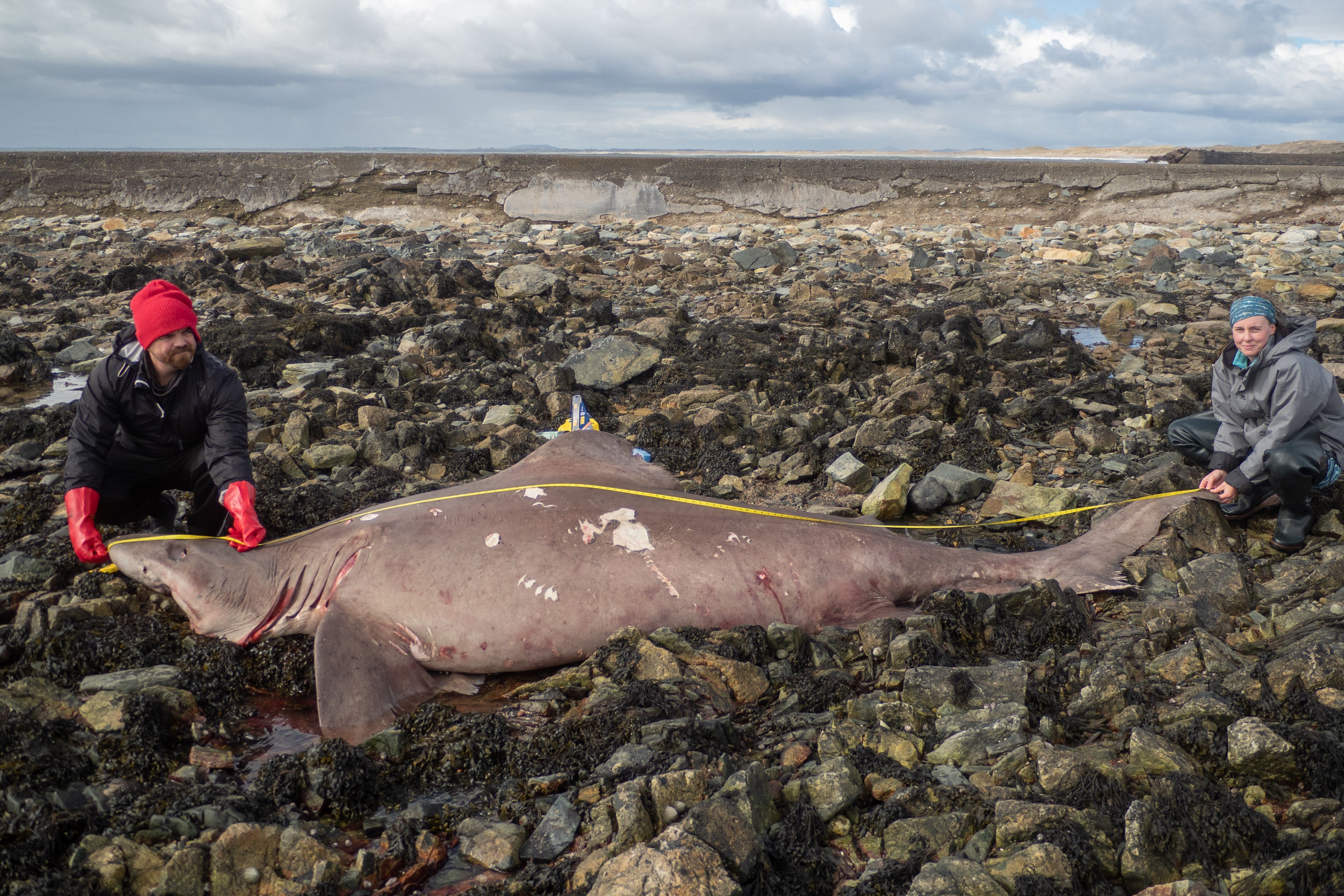Huge shark washes up on Irish beach in first recording of rare species
The 14ft female smalltooth sand tiger shark is at the upper end of the size limits for the species

Your support helps us to tell the story
From reproductive rights to climate change to Big Tech, The Independent is on the ground when the story is developing. Whether it's investigating the financials of Elon Musk's pro-Trump PAC or producing our latest documentary, 'The A Word', which shines a light on the American women fighting for reproductive rights, we know how important it is to parse out the facts from the messaging.
At such a critical moment in US history, we need reporters on the ground. Your donation allows us to keep sending journalists to speak to both sides of the story.
The Independent is trusted by Americans across the entire political spectrum. And unlike many other quality news outlets, we choose not to lock Americans out of our reporting and analysis with paywalls. We believe quality journalism should be available to everyone, paid for by those who can afford it.
Your support makes all the difference.A rare shark washed up on the shores of Co Wexford, in what scientists believe to be the first official record of the species in Irish waters.
The smalltooth sand tiger (Odontaspis ferox) is rarely seen by humans as it normally lives offshore in waters more than 100m deep.
At 14 feet long, the female shark discovered in Wexford is at the upper end of the size limits for the species.
Scientists at Trinity College Dublin said they were surprised to see it in Co Wexford, as it was thought to be distributed only as far north as the Bay of Biscay in the eastern Atlantic Ocean.
Shark biologist Dr Nicholas Payne, an assistant professor at Trinity College Dublin’s School of Natural Sciences, was notified of the stranding by a Swiss tourist who happened across the shark while walking on Saturday.
He said he “couldn’t believe it” when he was notified.
“I knew we had to get down there urgently to sample this rare animal,” Dr Payne said.
A team of researches from Trinity College and University College Dublin worked against the incoming tide to take biological samples from the shark in a bid to discover why it died.
“We will now do a number of tests to try to learn what might have caused this to happen and also to learn more about this species in general,” Dr Payne said.
“To see a second one here so soon after is a little concerning,” Dr Payne added.
Another shark of the same species washed up in southern England two weeks ago. It was discovered by TV historian Dan Snow.
Mr Snow first encountered the shark washed up on his local Lepe Beach on 18 March. It was later identified as an “exceptionally rare visitor to these shores”, asked by biologists to “secure it.”
However, the head, tail and fin were cut off before the historian was able to assemble a large enough team to remove it from the beach. Now, he has urged those responsible to “get in touch” to “let the scientists have a look.”
The smalltooth sand tiger sharks are assessed as “vulnerable” by the International Union for Conservation of Nature.
Dr Jenny Bortoluzzi helped with the dissection and said the information will be “invaluable”.
“It’s also wonderful that a member of the public contacted us because it shows increasing awareness, and we hope this encourages more people to get in touch in the future should they come across something similar.”


